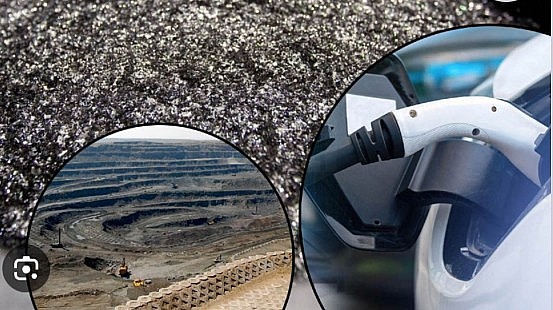India can become self-sufficient in rare earth magnets: report
 |
India can become self-reliant and globally competitive, given its fifth-largest reserves of rare earth elements, according to advisory firm Primus Partners. It outlined a comprehensive five-pillar blueprint to develop a domestic production ecosystem for neodymium–iron–boron (NdFeB) magnets.
Primus Partners released a report titled "From Extraction to Innovation: A Blueprint for Enhancing Rare Earth Magnet Ecosystem in India's EV Roadmap", which asserted the urgent need to localise the rare earth magnet manufacturing, highlighted five broad areas to work on. They are market assurance, pilot hubs, upstream security, innovation infrastructure and institutional alignment. The Indian Ministry of Finance has already called Chinese plans to curb rare earth exports a “concerning development”, which has driven the country to find ways to become self-sufficient.
India has adequate rare earth resources, but there is a need to devise a mechanism to exploit them, said Davinder Sandhu, Co-Founder and Chairperson of Primus Partners. "India has both the reserves and the demand. Yet, despite holding the 5th largest rare earth reserves, we account for less than 1 percent of global magnet production. The INR 34,300 crore outlay under the Critical Minerals Mission is a strong start, but we can't afford to remain resource-rich and capacity-poor."
Sandhu sought to reduce India’s dependence as supply disruption and geopolitical chokehold can hurt the local industry. "China spent decades building its dominance; India doesn't have that luxury. We must compress that journey through bold investments in technology, fast-tracked clearances, and strong industry-research partnerships to scale extraction, processing, and recycling," he said.
The report underscored market assurance as one of the five pillars, in which it sought price guarantees by the government of India and long-term purchase agreements to stabilise costs and attract private investment. The second pillar sought to build pilot-level clusters in Odisha, Andhra Pradesh and Tamil Nadu,integrating mining, processing and magnet manufacturing. India imported rare earth elements worth USD 31.9 million and rare earth magnets worth USD 291 million in 2025.
Expansion of Neodymium-Praseodymium oxide production capacity by state-owned IREL Limited and creation of a strategic reserve covering six months of domestic needs are parts of the third pillar. The blueprint suggested a two-year period for setting things up and another five years for incentives. India is expected to witness 30 percent EV penetration by 2030. In such a scenario, the rare earth reserves would have to be exploited, thus reducing dependence on China and strategic risks.
Fourth pillar recommended innovation in the infrastructure by launching a National Rare Earth Innovation Hub to advance R&D in process optimisation, recycling, and high-performance magnet grades. And all this could happen through institutional alignment. The fifth pillar underscored the need for a coordination cell to streamline approvals and track progress.
All this will make India independent of Chinese imports, said Nikhil Dhaka, Vice President of Primus Partners. "As the sustainable mobility sector accelerates, we need a national effort to de-risk EV manufacturing at its core. Without urgent localisation, technology innovation, faster approvals, and strong private-sector partnerships, every vehicle we build will carry the same import dependence we face today," he said.
The objectives of the INR 1,500 crore scheme-- National Critical Mineral Mission—seek to secure mineral supply chains by targeting exploration, processing, and recycling of strategic minerals. Moreover, a few more incentive programmes are in the pipeline to boost local production of rare earth magnets. The Primus Partners report recommended the active cooperation from the local industry, policymakers, and research and development (R&D) institutions to become self-sufficient for smooth, sustainable mobility and energy transition.
Incidentally, major companies including Vedanta Group, JSW Group, Sona BLW Precision Forgings, Mahindra & Mahindra and Uno Minda have shown interest in rare earth magnet production. While regulatory reforms were required to accelerate the exploration of rare earths, the IREL, which has already begun working, could collaborate with international companies to further upgrade its technologies, said Siddharth Goel, a consultant specialising in critical minerals and renewable energy supply chains. “The Indian government has launched some promising steps to address this challenge, such as expediting auctions for the domestic exploration of critical minerals, including rare earths,” he said.
